
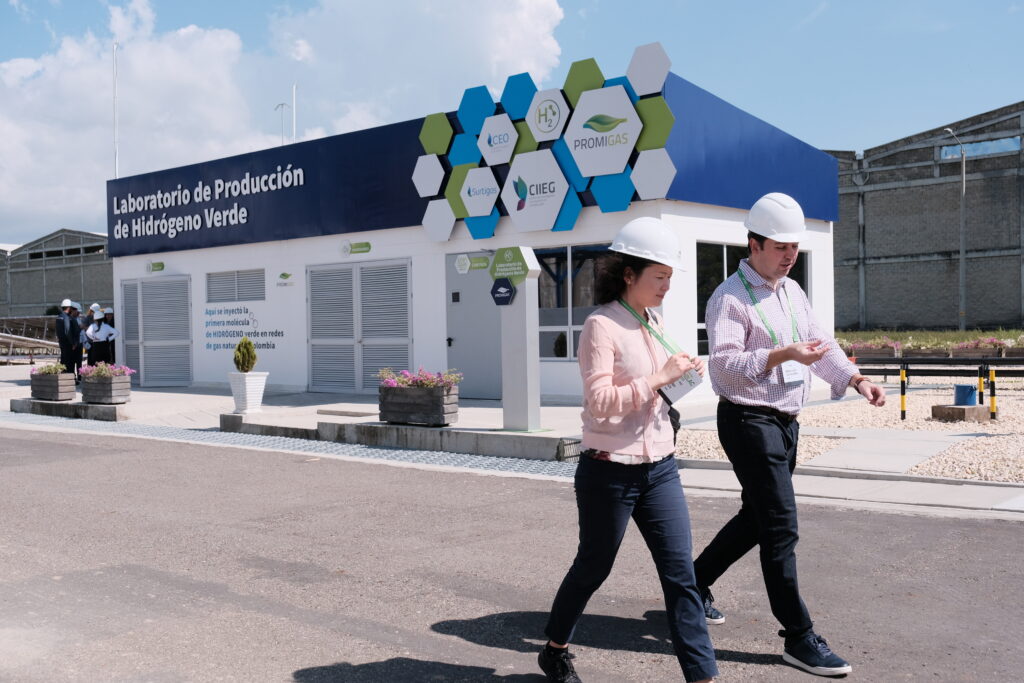
The Second Latin America & Caribbean Hydrogen Economy Index (H2LAC Index 2022)—a tool first introduced last year to track progress in this burgeoning industry—showed a significant increase in activity across the region.
Colombia posted one of the strongest performances, moving from fifth spot in 2021 to second this year as measured by the index, which was developed by New Energy Events in partnership with the energy consulting firm Hinicio.
“Colombia has done a tremendous job in many aspects,” Hinicio CEO Patrick Maio said recently, citing the creation of a national plan for hydrogen, government support for hydrogen projects, and the establishment of industry associations as some of the steps forward in the past year.
Overall, Maio said, the index showed a “radical acceleration” of hydrogen industrial pilot projects in development or in operation across the region, from 35 last year to 84 in 2022. “That, to me, says everything,” he added.
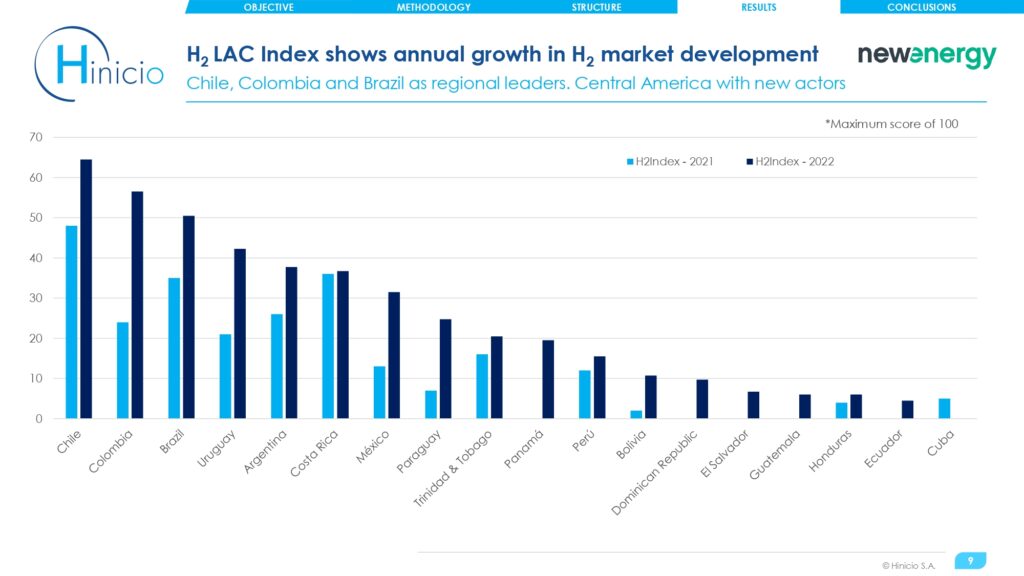
Maio was speaking at thr Second Hydrogen Congress for Latin America and the Caribbean, held on October 4-5 in Cartagena, Colombia. The conference, hosted by New Energy Events and the Inter-American Development Bank (IDB), brought together more than 250 participants from across the region to share their experiences and explore how Latin America and the Caribbean can capitalize on hydrogen’s potential.
“Our region is very well positioned to produce, store, and distribute clean hydrogen at a competitive price,” Ariel Yépez, who manages the IDB’s Infrastructure and Energy Sector Department, said in opening remarks at the conference.
The main reason for that, he said, is the region’s vast supply of renewable energy resources. Many countries already generate most of their electricity from renewables—including hydroelectric, solar, wind, and geothermal—and the region as a whole is committed to keep increasing the share of renewable energy in the power mix.
That gives Latin America and the Caribbean a natural advantage in the production of green hydrogen, Yépez said, referring to hydrogen produced via electrolysis, using renewable electricity to split water into hydrogen and oxygen.
Although green hydrogen isn’t yet economically viable, its development is very much underway. In fact, the day before the conference began, about 60 of the participants toured a pilot project in Cartagena that is producing small amounts of green hydrogen to blend with natural gas. (See related story below.)
Many people have heard about advances in green hydrogen in Europe or other parts of the world, but a visit to a facility just south of Cartagena brings the topic closer to home.
Yépez said that in recent years, hydrogen has been emerging as “a key ally” for countries to be able to meet their ambitious decarbonization goals by 2050. Hydrogen made from fossil fuels is commonly used today in heavy industry, so substituting that with clean hydrogen could significantly reduce industrial emissions. Hydrogen also has the potential to decarbonize sectors such as aviation, shipping, and long-haul transport.
Hydrogen can also accelerate the large-scale production of electricity from intermittent sources such as wind and solar, because of its capacity to store renewable energy and provide stability and flexibility to power systems, Yépez said. And, he said, the production of green hydrogen and its derivatives will allow electricity to be exported from one continent to another without the need for transmission lines. The possibility of shipping hydrogen by sea could also speed up decarbonization in small island states, he added.
The role that hydrogen will play in the future will depend on several factors, according to Yépez, including the market cost for both hydrogen itself and renewable energy resources such as solar and wind. Although there are still challenges related to hydrogen transport, he said, the delivery of the first shipment of liquid hydrogen from Australia to Japan earlier this year shows the technical feasibility of eventually creating a complete hydrogen value chain.
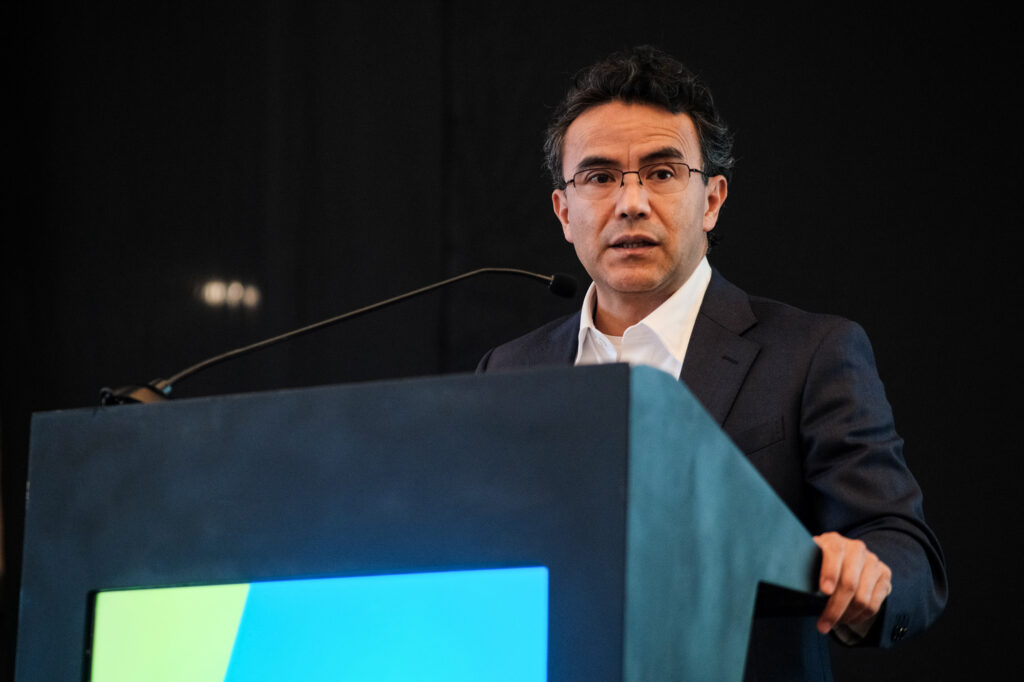
The region is well positioned to produce green hydrogen competitively, according to Ariel Yépez of the IDB. Photo courtesy of New Energy.
In her remarks to the conference, Colombia’s Minister of Mining and Energy, Irene Vélez Torres, stressed the opportunity to develop hydrogen resources within the context of a just energy transition. It is critical for governments to work in partnership with the private sector and with communities to ensure that this new industry helps to improve the well-being of those who live where hydrogen is produced, she said.
That hasn’t always happened in the energy sector, she noted. She gave the example of the department of La Guajira, in northeastern Colombia. Despite being rich in energy resources, both fossil fuels and renewables, the region has “shocking” levels of poverty, she said.
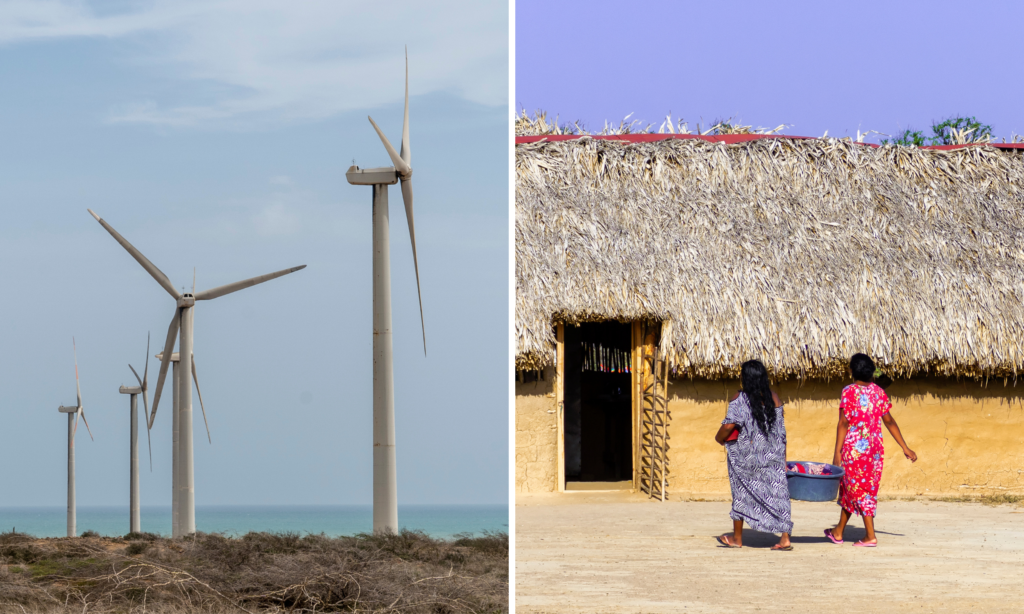
The Colombian department of La Guajira is rich in energy resources, but many of its people live in poverty. Above left, the Jepirachi Wind Farm, which opened earlier this year in Cabo de la Vela; above right, two Wayuu women in a native village.
“A major Latin American challenge in developing the hydrogen economy is for this to be done in conditions of equity, in which the beneficiaries of this new emerging economy are the people,” she said.
The two-day agenda featured panelists from the private sector, government ministries, and international financial institutions, among others. Francisca Salas, who heads the Green Hydrogen Program at New Energy Events, opened the conference by explaining that the aim of the annual gathering is “to support all of you in the development and acceleration of a regional hydrogen economy.”
“We want an economy that is robust, that provides different opportunities to all of society, that promotes new technologies, more and better jobs,” she said, adding that the hydrogen economy will also allow countries in the region to decarbonize their industry and generate international commercial trade.

Colombia’s Minister of Mining and Energy, Irene Vélez Torres, talked about the need to develop hydrogen resources as part of a just energy transition. Photo courtesy of New Energy.
As the H2LAC Index 2022 shows, many countries are on their way to making that happen, although all of them have plenty of room to grow. The index uses a set of indicators to evaluate the variables that have an impact on the development of a hydrogen economy. It looks at five broad categories: public policies and regulations, the local hydrogen ecosystem, the number of renewable hydrogen projects in operation or in development, hydrogen mobility, and export planning and international agreements.
A score of 100 would mean that a country is starting to have a mature hydrogen market. By that measure, Chile had the highest score in the region, at 65, Colombia came in second, at 57, and Brazil had 51 points. (In 2021, no country had yet reached the halfway point.)
The other countries in the top 10 were Uruguay, Argentina, Costa Rica, Mexico, Paraguay, Trinidad and Tobago, and Panama. Peru, Bolivia, Dominican Republic, El Salvador, Guatemala, Honduras, and Ecuador also reported hydrogen-related activity.
Every country that participated in both years’ surveys registered growth. Uruguay’s score doubled, from 21 to 42; Paraguay’s increased from 7 in 2021 to 25 in 2022; and Panama’s went from 0 in 2021 to 20 this year.
María Shaw-Barragán, who directs lending operations for the European Investment Bank (EIB) in several global regions, including Latin America and the Caribbean, urged quick action on the hydrogen front.
“Don’t wait. Being there from the beginning will give a competitive advantage to your companies,” she said in an onstage interview conducted by Matthew Perks, CEO of New Energy Events.
Even though some grants and concessional financing may be available in the early stages, she said, this will be a competitive market, and nobody should go in expecting that everything will be subsidized. “Hydrogen is going to be a global market. Don’t think small,” Shaw-Barragán said.

María Shaw-Barragán of the European Investment Bank urged companies to move quickly on green hydrogen, which she said will become a highly competitive, global market. Photo courtesy of New Energy.
The EIB, which is the financing arm of the European Union, provides about $10 billion in annual funding outside the EU, mainly focused on climate action, she said. Although the European Union is certainly interested in securing its own supply of green hydrogen, she said, it also wants to expand the hydrogen market in other regions for the sake of the planet.
“Any decarbonization that happens in the industry here in Colombia, or anywhere else in Latin America, is good for all of us,” she said.

Visitors from the Second Hydrogen Congress for Latin America and the Caribbean toured the Promigas green hydrogen facility. Photo courtesy of Promigas.
Many people have heard about advances in green hydrogen in Europe or other parts of the world, but a visit to a facility just south of Cartagena brings the topic closer to home.
“When we welcome people from Colombia or Latin America, you can sense the pride that these things are also happening in our region,” said Marco Sanjuan, Manager of Innovation at the Colombian energy company Promigas, which began operating the pilot project in March of this year. A tour of the plant shows that “this is real,” he said, and motivates visitors to want to become involved in new initiatives on a larger scale.
Located at its “Estación Heróica,” the Promigas plant includes an array of 324 solar photovoltaic panels with a kilowatt peak power output of 137 kWp; this is the power source for a small electrolyzer that splits water molecules (H 2 O) into hydrogen and oxygen. During the day, the solar panels feed the excess electricity they generate into the local power grid, and at night, the facility draws power from the grid.
Colombia produces more than 70% of its electricity from renewable sources, which means that the power from the grid is largely green too, Sanjuan pointed out. The hydrogen produced at the plant, he said, is considered green under the strictest certification standards in the world today.
Currently, Promigas is injecting minute amounts of hydrogen into its natural gas network, at a concentration that averages about 0.013%, Sanjuan said during an interview via Zoom.
The facility produces about 1.5 tons of hydrogen per year and is designed to eventually produce up to 18 tons. Five basic principles drove the design of the project, according to Sanjuan: development of a supply chain; functionality and flexibility (for example, it could someday also produce hydrogen for a small number of vehicles); scalability; generation of knowledge; and development of talent.
One item not on that list, Sanjuan pointed out, is generation of revenue. Even if the company wanted to charge for the green hydrogen it is producing, he said, it would not yet be able to under Colombian regulations. In a few years, though, when the market has reached a point where this is a viable product, “those who will be ready to enter the market will be those who have generated the knowledge.”
Promigas, which has traditionally been a natural gas transportation and distribution company, began to get into other areas of the energy business a few years ago, including solar power and distributed generation. It invested about $1.2 million in the hydrogen plant, using imported components but relying heavily on Colombian engineering. The company benefited from tax credits but did not receive direct government financing.
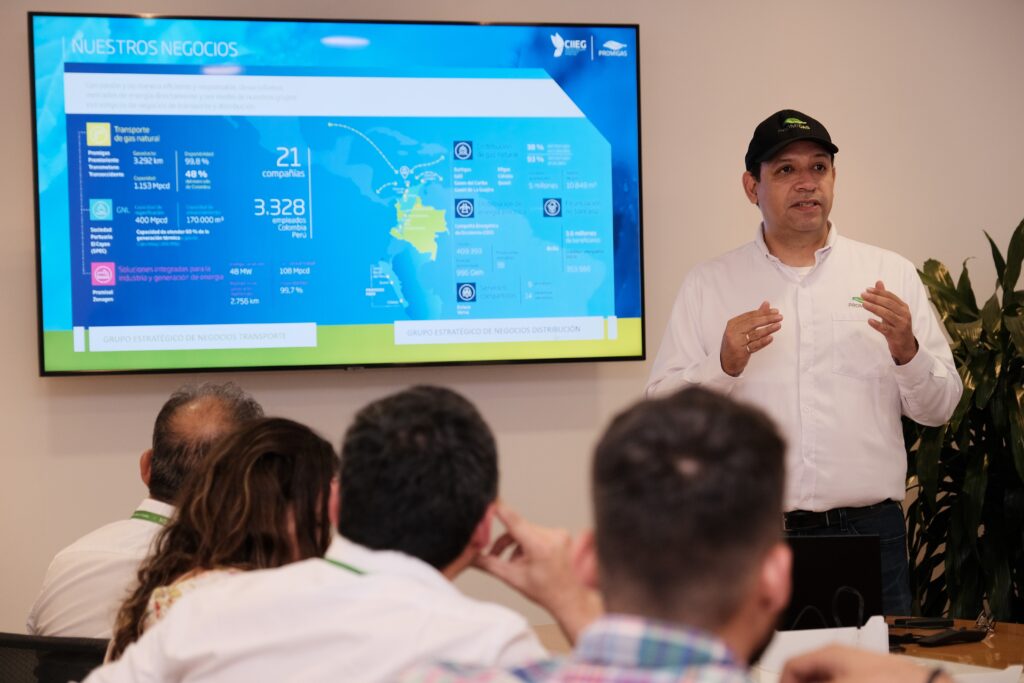
Marco Sanjuan, Manager of Innovation at the Colombian energy company Promigas.
The small-scale project was designed and built on a fast track. “Not even a year had gone by from the time this was a PowerPoint to when we already had green hydrogen being produced and injected into the network,” Sanjuan said.
 View Map
View Map